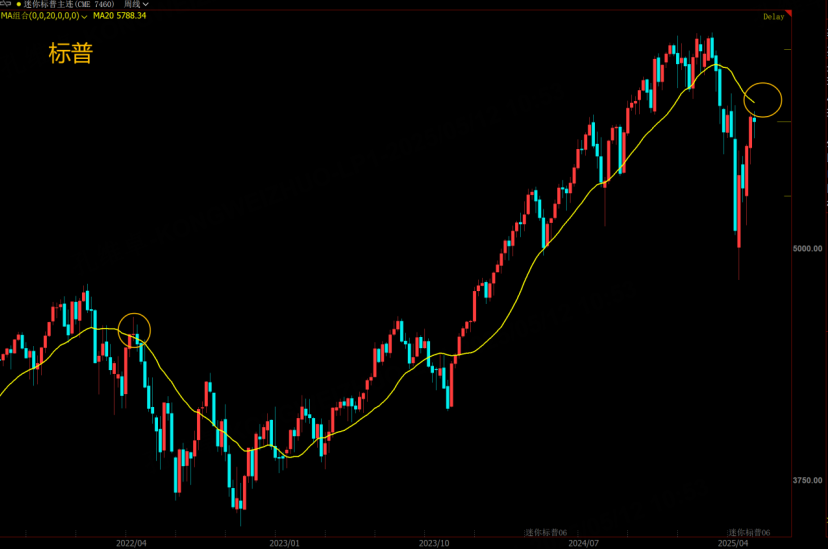Originally, it was anticipated that the market would stabilize as progress was made in tariff negotiations and Russia-Ukraine talks, and the Federal Reserve clarified its interest rate cut trajectory following its latest meeting.
However, just as the situation seemed to settle, a fresh wave of India-Pakistan conflict erupted, directly leading to sharp fluctuations in gold prices, signaling a renewed sense of uncertainty in the markets. Although later reports indicated a ceasefire between the two countries, sporadic clashes resumed within hours, making the news cycle highly unstable and necessitating an adjustment in price expectations.
1. What Is the Impact on US Stock Indices?
Currently, such small-scale regional conflicts have limited impact on the US stock market, and may even provide a modest boost (given increased expectations of arms sales, which benefit defense companies).
At present, the main factor influencing US stock indices remains tariff developments. Since the resolution of US-UK tariff issues, it is expected that other countries or regions will gradually reach tariff agreements with the United States.
Talks between China and the US have also been reported. As most tariffs have already been imposed, barring major moves outside of the economic and trade sphere, there should not be significant further negative news.
Therefore, compared to other markets, US stock indices are likely to remain relatively stable with reduced volatility during the current 90-day grace period.
Technically, however, US stock indices remain below the 20-week moving average-an important resistance level for a rebound. Whether they can effectively break through depends on the specific outcomes of China-US negotiations; as a result, the market is likely to continue oscillating.
2. Is Gold’s Price Correction Over?
The sudden India-Pakistan conflict was truly unpredictable, and quickly heightened risk aversion in the market, forcing a postponement of previously expected corrections in gold prices. With no real ceasefire achieved between India and Pakistan, it is anticipated that market sentiment will remain tense this week, and gold prices may stay strong.
Technically, although gold underwent a slight correction after the recent Federal Reserve meeting, it remains above the 20-day moving average, which continues to act as support.
If gold does not drop sharply below the 20-day average next week, it could easily continue rising; for those taking short positions, please manage your exposure carefully. In terms of timing, the end of next week will be a significant period for gold prices, so observe closely whether the price at that point is a recent high or low, and be prepared for possible changes.
3. Oil Prices Await the Outcome of US-Iran Negotiations
Nuclear negotiations between the US and Iran have persisted for years. For Iran, lifting economic sanctions is crucial, but the “nuclear red line” remains the main sticking point for both sides. If negotiations succeed, Iranian crude could enter the global market. Even though Iran claims it will comply with OPEC production quotas, its substantial existing inventories will still exert downward pressure on oil prices.
On the other hand, if negotiations fail, it is possible that, acting on instructions from Trump, Israel may attack Iran’s nuclear facilities or oil ports, which would push oil prices higher.
Since oil prices have already declined somewhat since the beginning of the year, any attack would likely trigger a rapid rebound, so keep an eye on relevant news developments.
$E-mini Nasdaq 100 - main 2506(NQmain)$ $E-mini S&P 500 - main 2506(ESmain)$ $E-mini Dow Jones - main 2506(YMmain)$ $Gold - main 2506(GCmain)$ $WTI Crude Oil - main 2506(CLmain)$



Comments